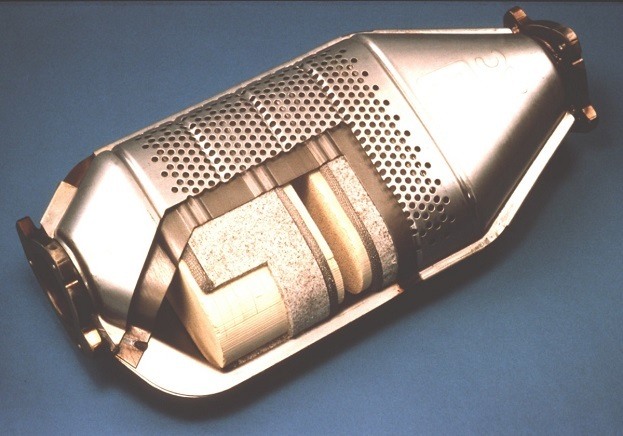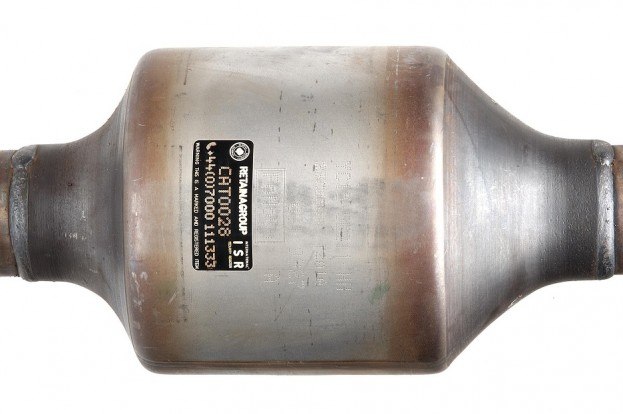A main defence against the release of environmentally harmful exhaust gases, catalytic converters design celebrates 40 years of reducing carbon monoxide, hydrocarbons and oxide of nitrogen emissions from vehicles. Using special metals and materials to change hazardous exhausts into less serious emissions, catalytic converters perform a meaningful environmental role making automobiles tolerable for life on Earth.
When mandated on vehicles for the 1975 model year in the United States, some argued the effectiveness of the new emissions control concept. Early catalytic converters were connected to dramatic drops in performance from the heyday of the muscle car era and even linked to fuel economy reductions. However, automotive engineers eventually found methods for regaining horsepower. Today, we accept the catalytic converter as a necessary device.
As an auto part, the catalytic converters are a costly replacement item. Typically ranging from $300 to as high as $1,000 at reputable auto service centers, the price of the catalytic converter reflects the use of valuable materials found inside the device. Based on the external location of the catalytic converter, this unit have grown increasing enticing for thieves. A crime noticeably on the rise with the price of precious metals climbing, theft of catalytic converters occurs often in parking lots. Vehicles with higher ground clearances such as crossovers and trucks are the easiest to access. Theft of a catalytic converter requires just a few minutes for a criminal with a cordless power saw. According to auto insurance company Nationwide, some scrap yards are paying thieves between $100 and $150 for a stolen catalytic converter. While many creditable scrap yards will curb thieves from dealing stolen parts, the crime still exists. To reduce theft, a number of proactive and preventive measures can deter criminals of this growing auto parts crime.
When parking your vehicle in a public lot for a long period, it is suggested you find areas that are well lit and secure. Since catalytic converter theft still requires thieves to operate with stealth, making sure your vehicle is well in sight is park closest to a main building.
For those who want to take extra measures to prevent their catalytic converter from being stolen, several anti-theft products exist. A general anti-theft alarm system can warn when the car is moved. Specialized anti-theft measures that can protect the valuable exhaust component. Several major auto part suppliers offer a catalytic converter lock device or alarm. Trouble is most of those devices cost roughly half as much as the catalytic converter itself.
An action growing in popularity is etching the catalytic converter with an identifying marker. Several companies provide services to professionally mark the catalytic converter. A company collaborated with Ford of Europe, Retainagroup Limited provides a service that uniquely code a catalytic converter with a plaque. This plaque is fastened to the catalytic converter in a fashion it is hard to remove and thereby difficult to offload. According to United Kingdom based company Retainagroup Limited, marked vehicles are 55 percent less likely to be stolen. Either thieves are deterred from the marking or the catalytic converter is easily identified.
While the theft of hubcaps and stereo systems proved popular in the past, catalytic converters have been the unlikely eye candy for thieves. However, with the use of low and high tech solutions in addition to responsible business practices of businesses, catalytic converters can remain in place for protecting the environment.
Information and photo source: Ford Motor Company, Retainagroup



